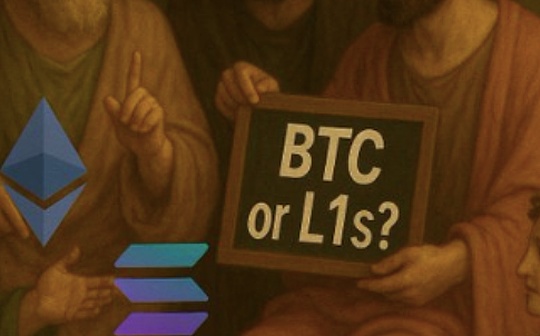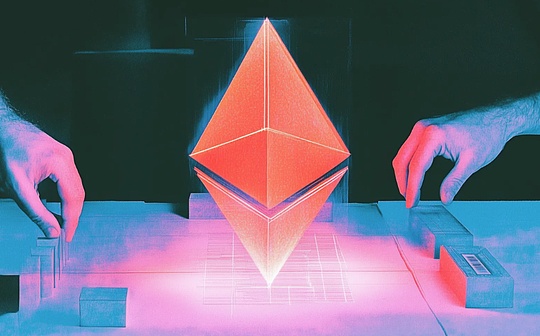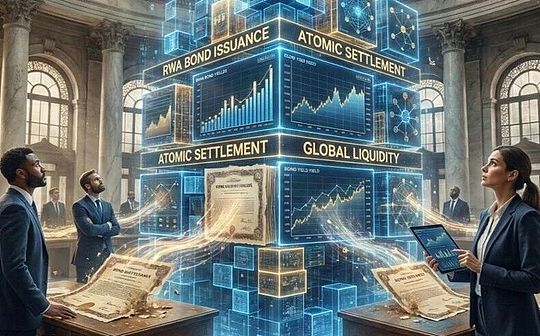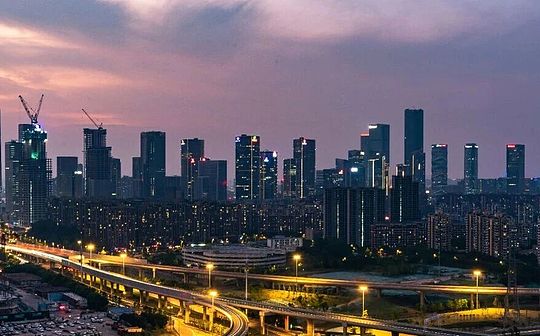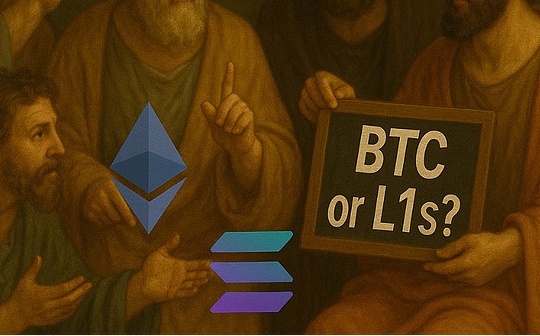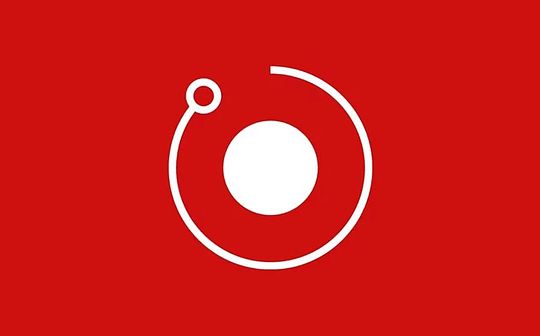
Source: Chain Tea House
1. Project introduction
Render Network is a decentralized platform that uses blockchain technology to provide high -efficiency and accessible rendering services.

The platform uses the unused GPU cycle to connect the content creator who requires computing power to connect with the GPU provider with excess computing power. By using these idle GPUs, the project realizes more efficient resource utilization, so that creators can use it to useVisit GPU resources in a cost -effective way.
In addition, the render network uses the GPU that has not been fully used in the blockchain mining, and the GPU that is inefficient to use during the non -rendering period, and the artist who needs a large amount of computing power to support a large number of computing power to support from large TV programs to large -scale graphicscreation.The process of rendering and streaming virtual content is simplified, and users are more likely to interact with immersive 3D environment, models and objects.
By operating on the Ethereum blockchain, Render uses smart contracts to establish a decentralized rendering service ecosystem, and its local token RNDR token is used as a transaction currency in the platform.The RNDR tokens are native and practical native token of Render Network, which is based on ERC-20 standards of the Ethereum blockchain.This kind of token plays a key role in Render Network, making it a decentralized rendering platform, allowing content creators and GPU providers to conduct transactions and resource sharing.
2. Working process
Render Network’s workflow is designed to optimize and simplify the process of 3D rendering, and uses distributed computing resources.This process not only increases rendering efficiency, but also reduces costs, and provides high -quality rendering results.

The following is a gradual analysis of the detailed workflow of Render Network:
(1) Create and submit tasks
Content creators (such as animators, game developers, or movie producers) first need to define their rendering needs on the Render Network platform.The tasks they submit include 3D models, scene files, and specific requirements for rendering, such as resolution, format and expectation delivery time.This information is encapsulated in a task request and published through smart contracts to the blockchain.
(2) Task pricing
Once the task is submitted to the network, the dynamic pricing system of Render will determine the price based on the complexity of the task, the required computing resources, and the urgency of the task.This price reflects the market supply and demand status and currently available GPU resources.
(3) task allocation
The task allocation is performed through the advanced matrix algorithm of Render. This algorithm will evaluate all the idle GPU resources.This process includes analyzing the hardware performance, availability and previous tasks of each GPU provider.The system automatically selects the most suitable GPU resources to perform tasks to ensure the highest efficiency and output quality.

(4) Rendering execution
Once the task is assigned to one or more GPU providers, the rendering process begins.The computer of the GPU provider starts processing data and executed the required rendering operation.This may include complex calculations such as light tracking, texture stickers, shadow generation and other complex calculations.
(5) progress and monitoring
During the task execution, Render Network provides real -time monitoring and progress updates, allowing content creators to track their task status.This process is implemented through the blockchain to ensure that all activities are transparent and verifiable.
(6) Results verification
After the rendering is completed, the generated images or videos need to be verified.Render Network uses decentralized verification mechanisms, such as “proof of render” to ensure that the results meet the initial task specifications.This includes checking the quality, integrity and any possible errors.
(7) File delivery and payment settlement
Once the rendering output is verified, the file will be delivered safely to the content creator.At the same time, the automatic payment system based on smart contracts handles transactions to ensure that GPU providers get their RNDR token as compensation.These transactions are recorded on the blockchain, ensuring that they cannot be tampered with and traceable.
(8) Feedback and scores
After the task is completed, the content creator can score the service of the GPU provider.This feedback mechanism helps maintain and improve the overall service quality and trust of the network.
This workflow not only enhances the accessability and burden of 3D rendering projects, but also optimizes the use of resources, so that even creators with limited resources can bear high -quality rendering services.This decentralized method also brings higher transparency and security, so that all participants can benefit from it.
3. RNDR gin

RNDR tokens Render Token (RNDR) is an ERC-20-based token, which is mainly used for transactions between artists and GPU suppliers in the platform.Users use RNDR token to obtain GPU computing power, and node operators earn a token by providing resources.Render and its CEO (Anurag Goel) said RNDR was “the first network of decentralized economy that transformed GPU computing power into interconnected 3D assets.”
3.1Main functions and use
-
Payment and reward mechanism:RNDR tokens are used to pay rendering services. Content creators use RNDR to pay nodes that provide necessary GPU power to operate.This process not only ensures that the service provider gets a fair remuneration, but also promotes the effective allocation and utilization of resources.
-
Incentive GPU provider: Through the RNDR tokens, Render Network inspires those individuals or organizations who have not fully utilized GPU resources to participate in the network.The provider has contributed its GPU resources to users who need to perform high -performance rendering operations, so as to obtain tokens as remuneration.
-
Network governance:In some implementation, RNDR tokens may also be used to participate in the governance decision -making of Render Network, such as upgrading protocols and adjusting network parameters.The holder can affect the development direction and policy changes of the network through the token voting rights.
-
Increase market liquidity:RNDR tokens circulate on multiple cryptocurrency trading platforms, increasing market liquidity, and it is easier for users to buy, sell and exchange tokens.This liquidity is a key factor that supports network health operation and expansion.
-
Drive community and ecosystem development:RNDR tokens are also used to reward community members’ contribution to the platform, such as participating in testing, providing feedback, and development related applications, thereby promoting the growth and prosperity of the Render Network ecosystem.
3.2Core feature
-
ERC-20 compatibility: RNDR is a practical token that meets ERC-20 standards. It is mainly used to pay the cost of animation, dynamic graphics and visual effects on the distributed RENDER network.
-
Reward system: Users can earn RNDR tokens by registering workstations on the Internet and completing rendering tasks.These tokens can be used to fund other rendering projects.
-
Advanced infrastructure options: Users can also choose to use Tier 1 nodes (such as Microsoft Azure high -security infrastructure) in the Render network for project rendering.
3.3Burning and casting balance (BME)
Destroy and coin balance (BME) is the token economics model of the RNDR token.According to the project, this is to create more value for tokens through providing better pricing and remittance arrangements for creators and node operators.According to this model, the network calculates the cost of work in the US dollar.The creator will be required to destroy RNDR equivalent to the US dollar value in order to create employment opportunities on the Internet.Creators who do not hold RNDR tokens will need to buy the token to create work, which will generate continuous demand for RNDR tokens.

After creating homework, node operators who handle the job will receive RNDR token awards.RNDR will be cast every period of the network.For each period, it calculates the percentage of the operation and treatment of each node operator.90% of the RNDR tokens cast each period are used for node operators rewards, and the rest are allocated to available rewards.Node operators get rewards based on the workflow and normal operating time challenges (also known as availability).Some availability rewards are also used to motivate creators to create work on the rendering network.The mechanism adjusts the volume according to the requirements of the network.
3.4Distribution and management
-
Token supply: The total supply of RNDR is 536,870,912 token, of which 381,861,234 RNDR has been distributed through public sales.25%of the first public sales were sold, 10%stayed in RNDR reserves, and the remaining 65%of the tokens were in the circulation regulation account of third -party custody.

-
Circulation and maximum supply: The RNDR token in circulation is 150,000,000, and the maximum supply remains at 536,000,000.
-
Token sales and price: The public sales of RNDR began in October 2017, and the public sales price was 1 RNDR = 0.25 USD.
-
Token migration: In order to increase the function of smart contracts, the RNDR tokens have been relocated from old contracts to new contracts and introduced additional hosting smart contract functions.
-
Excess token was destroyed: During the relocation of tokens, 161,061,273.6 RNDR tokens exceeded by the original contract will be destroyed to adjust the total supply.

As of now, the market price of RNDR tokens is $ 8.60, and the price of RNDR tokens has risen by 17.42%in the past 24 hours.The market value is $ 3,282,880,123, ranking 31st among all cryptocurrencies.
4. Project advantages
Some benefits brought by Render Network to the field of GPU processing:

-
Scalability:Creators using Render Network can obtain on -demand GPU capabilities, and they can rent as many GPU capabilities as required to complete the task.It is reported that Render Network has more GPUs with Bayamazon and Google. Therefore, it is no exaggeration to say that the creator of Render Network can access the infinitely scalable GPU power system.
-
Privacy and security:Because Render Network is processed from individuals to well -known global studios, it has taken measures to protect the privacy of creators and assets on the Internet.These measures include encrypted assets, restricting a single asset storage in the short term, and adding watermarks to a single frame to ensure that paying before downloading the scene.
-
Transparency and fair pricing:Render Network claims to provide a completely transparent system for creators and node operators.As mentioned above, through the use of blockchain processing payment, the interaction between all creators and node operators can be publicly verified on the public classification account of the blockchain.Both creators and node operators need to establish reputation scores to access a large number of concurrent GPU nodes (creators) or receive more operations (node operators), depending on the number of successful operations.This is combined with the multi -layer pricing system to allow users to pay according to their needs and budget.
-
Application cross -border:The Render network can not only be used to render graphics and other assets, but also extend to AI calculation. Among them, the GPU power can be rented to train generating AI models.
-
Promote for the growth of AI interest and demand: With the increase in AI in 2023, the value of RNDR tokens increased by more than 1,000%. This is because the demand for the GPU training AI model exceeds the main cloud server such as Amazon Web services, Microsoft, Google, and Oracle.Supply of business.
5. Actual application example
Render Network’s GPU processing capacity can be rented on various applications, from movie and game development to artificial intelligence.Render Network supports use cases outside the following summary, including physical and mathematical simulation or project mapping.

Movies, games and other media:Movies and game development require high -quality graphics. Creators in this field can benefit from scalable GPU capabilities and turn their vision into reality.Artist and 3D action designer RAOUL MARKS uses RENDER Network to create a prefix sequence for programs such as “Western World” Season 4.
Artificial Intelligence (AI):On July 11, 2023, Render Network shared plans to support AI and machine learning tasks (operations); this integration will allow node operators on the network to bear the rendering of graphics and prototypes generated by artificial intelligence.Due to the high calculation requirements for generating images, Rener Network’s Rental Rental is to allow these applications to render high -quality images at a lower cost.
Architecture and product design:Architects and product designers can also use the rendering network to design and develop high -quality 3D visualization effects for them.Product designers can make prototypes on a large scale, through parallel GPU rendering test texture and color, while architects can create an immersive virtual real building rendering.

6. Team/partner/financing situation
Render was founded by Jules Urbach in 2017.Earlier, URBACH also founded cloud -graphical company OTOY. The company’s products have been used by film producers to make movies, developers are used to make video games, as well as people using the frontier of virtual reality and the frontier of the Yuan universe.Otoy was supported by major film companies such as Disney and HBO.
Render has been operated by OTOY since its establishment and has been designed as a blockchain -based solution, reflecting its centralized, cloud -based products.However, in January 2023, the newly established Rener Network Foundation announced that it would take over the strategic management of the project and coordinate its community.Other supporters such as OTOY and SWATCHBOOK and MR Studios will still participate in engineering, development and other services.
Another important member of the team is Ari Emmanuel.At present, Emmanuel is the co -founder and co -CEO of the project.
Render has established a strategic partnership with many industry giants.Among them, the most noteworthy is its cooperation with NVIDIA.Considering the status of NVIDIA in the GPU and the game market, this is of great significance.This cooperation may involve technical cooperation, integration or joint marketing of NVIDIA technology.

At present, Render has raised a lot of funds, including a $ 50 million round B financing led by Bessemer Venture Partners.The fund is designed to expand its product kit for large software teams and accelerate the migration from the old platform.Such a huge amount of funds shows that investors are confident in the business model and future growth prospects of RENDER.
7. Future development analysis
The future development of the Render network can analyze the market demand, technological progress, and industry trends it provided by it.The following is the challenges and opportunities that the Render network may face:
7.1opportunity
-
Growth demand: With the increase of virtual reality, augmented reality, 3D printing, and the demand for high -performance rendering for high -performance rendering, the RENDER network has the opportunity to expand its market share.
-
Decentralization trend: More and more industries are seeking decentralization solutions to improve efficiency and reduce costs. The Render network is at the forefront of this trend.
-
Art creation and NFT: The popularity of digital art and NFT has increased demand for high -quality rendering. The Render network may become the preferred platform for artists and creators.
-
The development of artificial intelligence: The development of AI and machine learning requires a lot of computing power, and the Render network can provide support for these industries.
-
Technological innovation: With the advancement of GPU technology, the RENDER network can improve service quality and efficiency by continuously integrating the latest rendering technology.
7.2challenge
-
Fierce competition: There are already other cloud computing and rendering services in the market. The RENDER network needs to provide unique value to attract and maintain users.
-
Technical complexity: Maintain a high degree of technical expertise and continuous development of a decentralized network.
-
Risks of regulations: Blockchain and cryptocurrency areas are facing uncertainty of law and supervision, which may affect the operation and expansion of the Render network.
-
Market fluctuations: The price fluctuation of cryptocurrencies may affect the motivation structure of the participants, thereby affecting the health of the entire network.
-
User Education: It takes time and resources to popularize the concept and purpose of popularizing the Render network, especially among non -technical users.
-
Dependence: If the operation of the Render network is excessively dependent on specific hardware or software platforms, it may face the risk of single -point failure or technical outdated.
Overall, the Render network is in a rapidly developing market, with broad growth space.However, in order to seize these opportunities, the RENDER network must overcome issues including technical challenges, market acceptance, and regulatory compliance.With the maturity of the market and the development of technology, the RENDER network may continue to adjust its strategies and services to meet the needs of changes.

